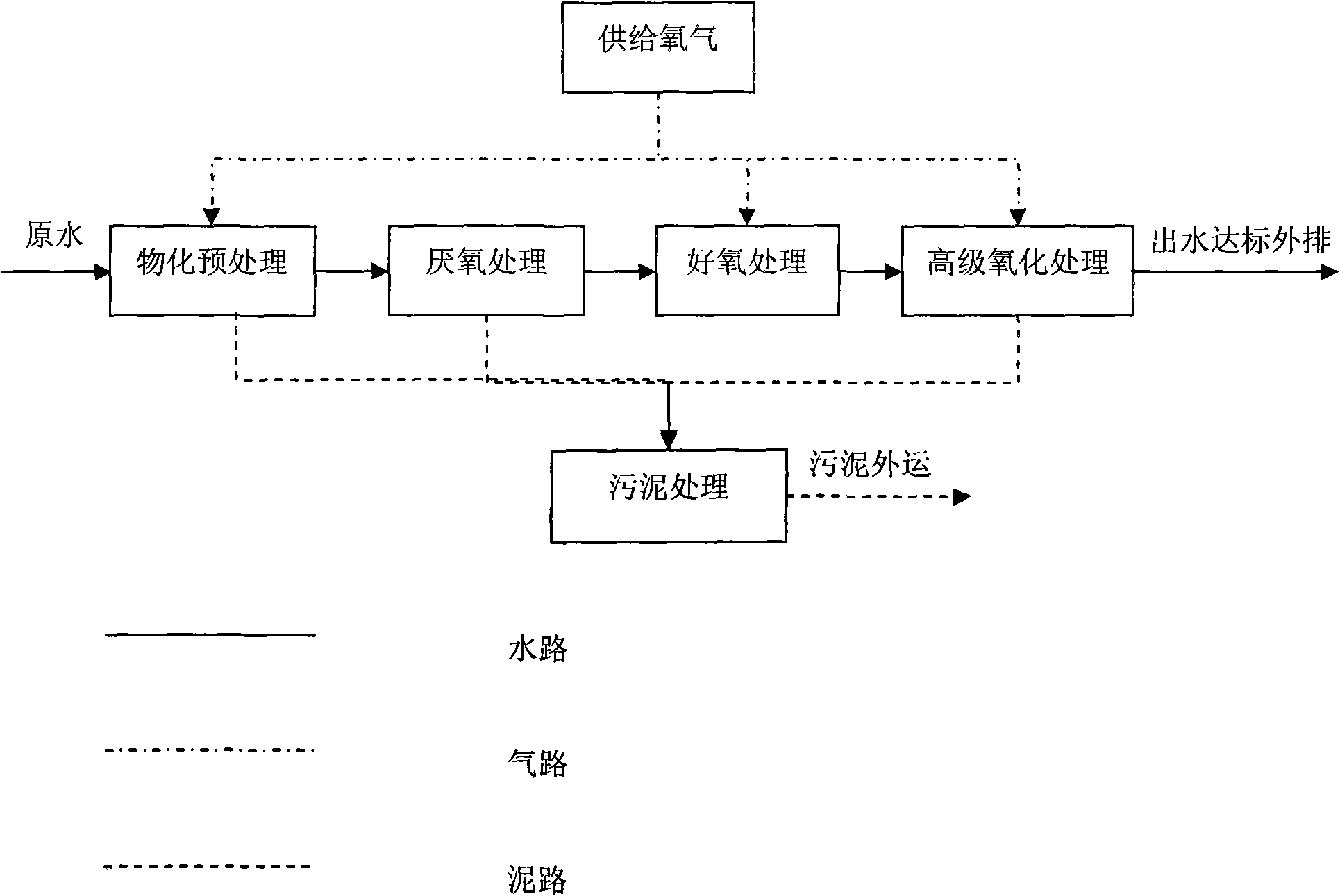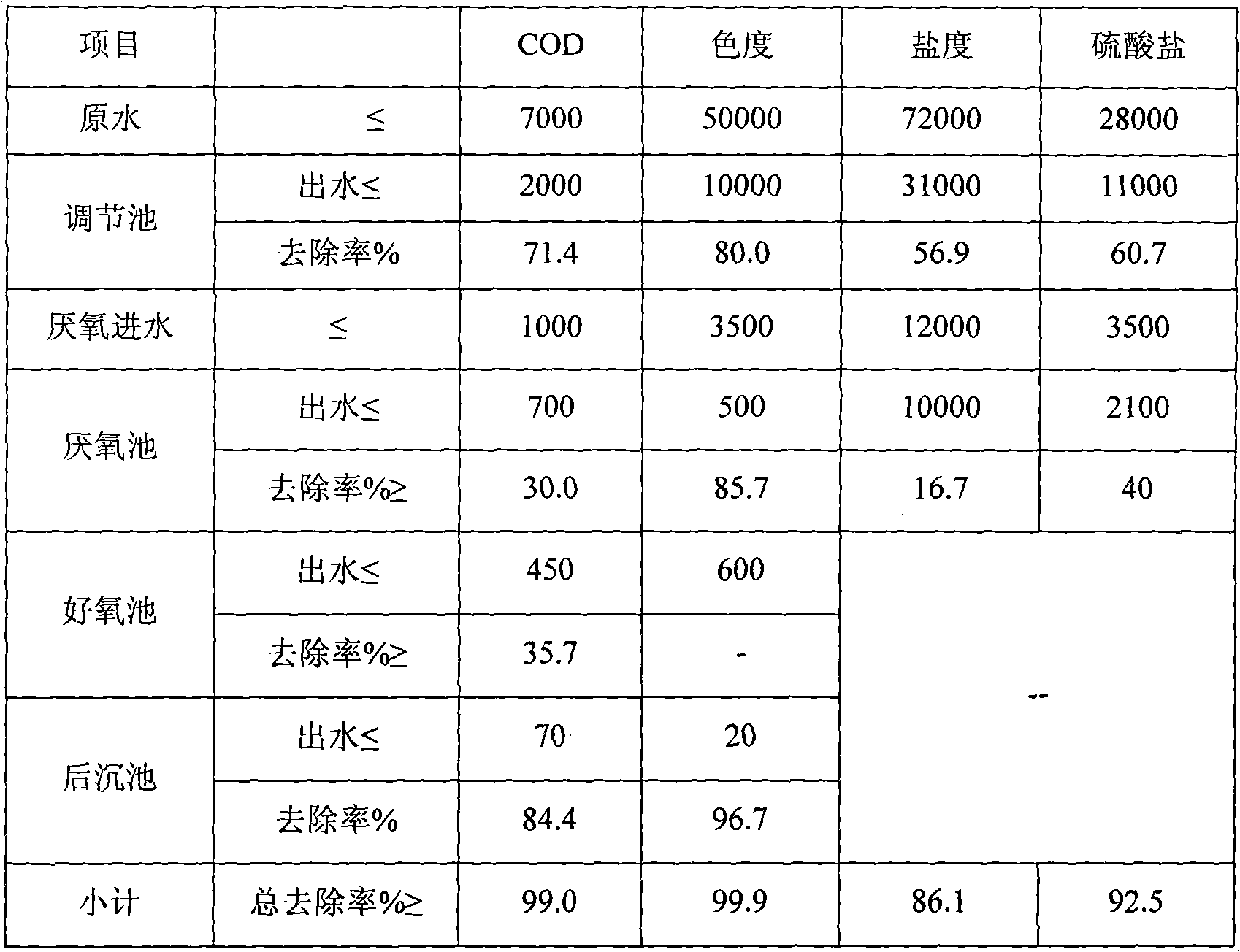Dye waste water treatment method
A dye wastewater and treatment method technology, applied in the field of wastewater treatment, can solve problems such as poor biodegradability, fluctuations in wastewater quality and water volume, failure to reach pH, alkalinity and sulfate concentration, etc., to reduce or reduce water pollution and reduce operating costs , The effect of eliminating water pollution
- Summary
- Abstract
- Description
- Claims
- Application Information
AI Technical Summary
Problems solved by technology
Method used
Image
Examples
Embodiment Construction
[0036] The present invention will be further described below in conjunction with the accompanying drawings. figure 1 It is a process flow diagram of the present invention, figure 2 It is a diagram of the dye wastewater treatment system of the present invention.
[0037] The invention provides a method for treating dye wastewater, such as figure 1 As shown, the combined process of "physical and chemical pretreatment + anaerobic + aerobic + advanced oxidation" (hereinafter referred to as PUBA combined process) is used to treat dye wastewater. The dye wastewater to be treated can be treated in the physical and chemical pretreatment system + anaerobic pool + aerobic pool + advanced oxidation treatment system set up in sequence. Such as figure 2 As shown, the physical and chemical pretreatment system includes an internal electrolytic tank, a pre-coagulation sedimentation tank arranged in sequence, and an advanced oxidation treatment system includes an internal electrolytic tan...
PUM
 Login to View More
Login to View More Abstract
Description
Claims
Application Information
 Login to View More
Login to View More - R&D
- Intellectual Property
- Life Sciences
- Materials
- Tech Scout
- Unparalleled Data Quality
- Higher Quality Content
- 60% Fewer Hallucinations
Browse by: Latest US Patents, China's latest patents, Technical Efficacy Thesaurus, Application Domain, Technology Topic, Popular Technical Reports.
© 2025 PatSnap. All rights reserved.Legal|Privacy policy|Modern Slavery Act Transparency Statement|Sitemap|About US| Contact US: help@patsnap.com



